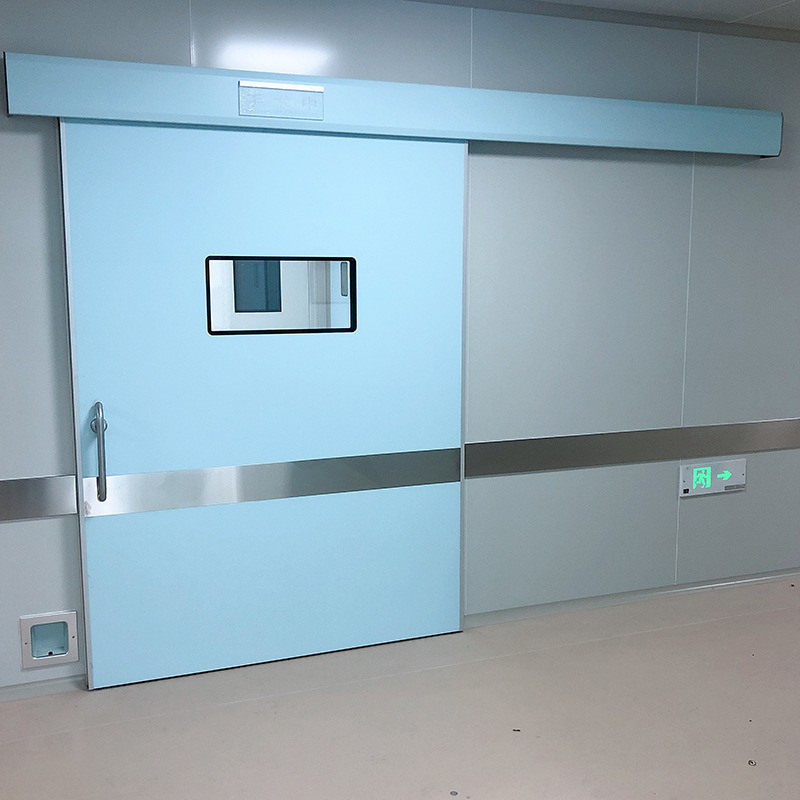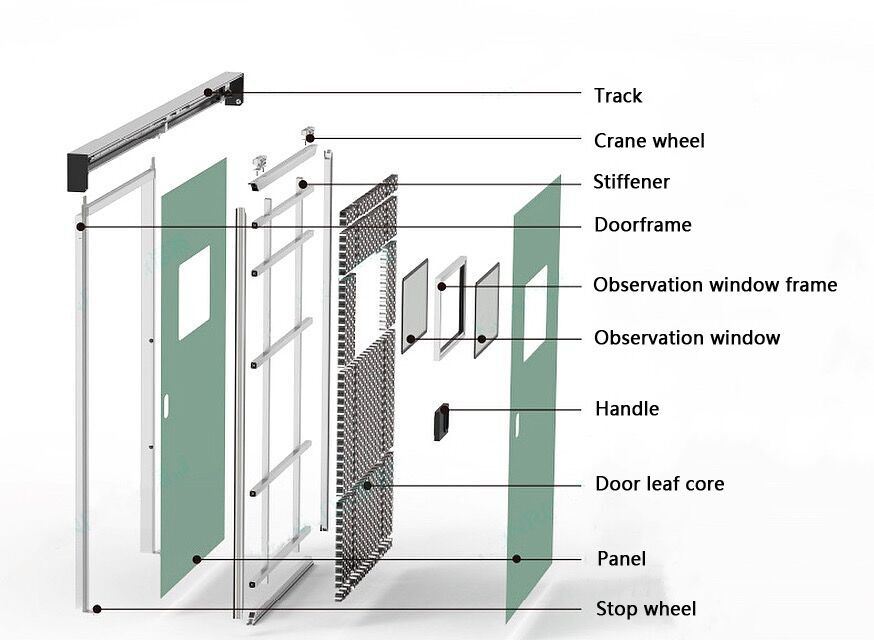What are the requirements for clean room doors

Clean room doors are a crucial component of clean room environments, and their performance directly affects indoor air cleanliness, airtightness, and overall operational efficiency. As a true passage between different levels of areas and the outside world, clean room doors are not only functional entrances, but also precision engineering barriers that are crucial to contamination control. Selecting and specifying the right cleanroom door requires meeting a complex set of requirements. SDpanel introduces the industry standards and technical requirements that clean room doors must meet.
Clean room doors materials
The material of the clean room door should meet the requirements of corrosion resistance, easy cleaning, and low particle release.
- Non-Particulating This is absolutely fundamental. The surface and core materials of the door must not generate or shed particles (lint, fibers, dust) that could contaminate the controlled environment. This rules out most woods, standard metals that tend to corrode or flake, and porous materials.
- Smooth, Non-Porous Surfaces The surface of the door must be water- and gas-proof and extremely smooth to prevent particle entrapment and facilitate thorough and effective cleaning and disinfection.
- Seamless Construction Minimizing seams, joints, and crevices is vital. Where joints exist (e.g., between the door leaf and frame), they must be tightly sealed and designed to prevent particle traps. Welded corners on metal frames are preferred over mechanical fasteners where possible.
Common materials for clean room doors include stainless steel, aluminum alloy, antibacterial coated steel plates, and high-density HPL boards. These materials not only prevent particle accumulation but also resist the erosion of disinfectants and chemical reagents, ensuring the long-term stable operation of the cleanroom.

Air tightness of clean room doors
Clean room doors must have excellent airtightness to prevent pollutants from entering the controlled environment. Cleanrooms rely on controlled air pressure differentials (positive or negative) to prevent contamination ingress or egress. Doors are the largest potential breach points.
- Perimeter Seals: High-quality, durable gaskets made from materials like silicone, EPDM, or Teflon are essential around the clean room doors perimeter. These gaskets must form a continuous airtight seal when the door is closed, maintain their shape and seal over time, withstand repeated cleaning and disinfectant attacks without degradation, and accommodate slight alignment deviations in the door frame/door.
- Seal Integrity Testing: Clean room doors should be designed and installed to allow for periodic verification of seal integrity, often through pressure decay testing.
Integration with Clean room Systems
Clean room doors must be integrated with other clean room systems.
- Wall Compatibility The clean room doors frame must integrate seamlessly with the clean room wall system, maintaining the airtight envelope and flush surface.
- HVAC Considerations: Door operation should not create excessive turbulence disrupting unidirectional airflow patterns near the door.
- Control Systems: Integration with building management systems (BMS) for monitoring interlock status, door open/closed alarms, or access control is common in higher-classification cleanrooms.
Compliance and Certification
Clean room doors must meet the facility’s target ISO class, prevent particle ingress and maintain pressure control. Additionally, cleanroom doors for the pharmaceutical and biotech industries often need to meet FDA, EMA or other specific regulatory guidelines regarding materials, cleanliness and validation (IQ/OQ/PQ). Clean room doors may need to comply with local building code fire protection requirements, require specific materials and construction, and meet cleanroom standards.
In short, the selection and installation of cleanroom doors requires comprehensive consideration of multiple factors such as air tightness, material, integration and compliance. SDpanel senior engineers can provide cleanroom solutions for global customers with excellent technology and rich industry experience, and provide high-quality panels, doors and windows solutions for cleanrooms around the world to ensure the safety and stability of the clean environment.
